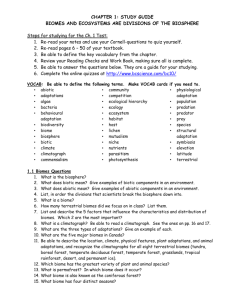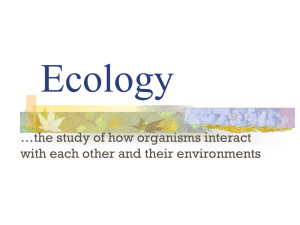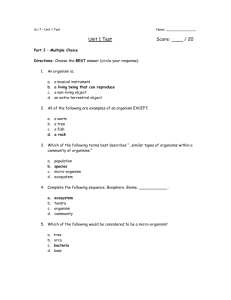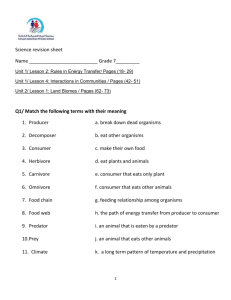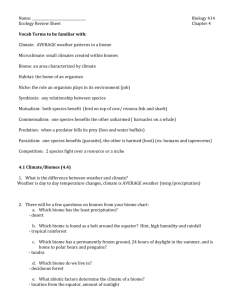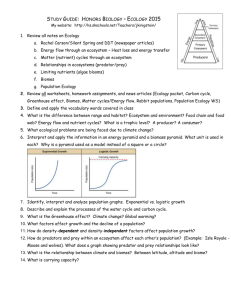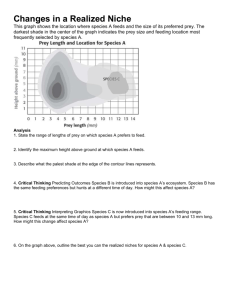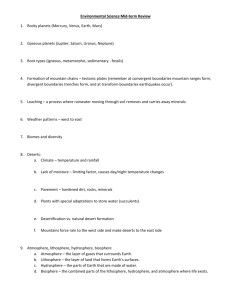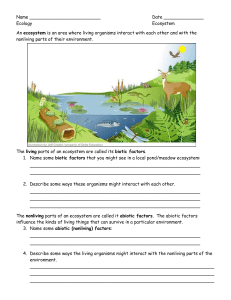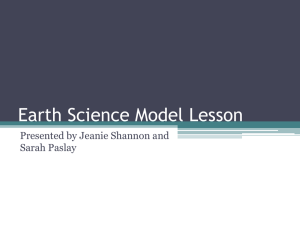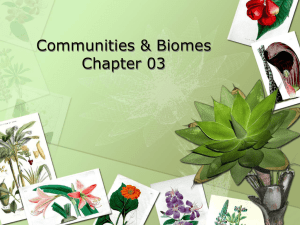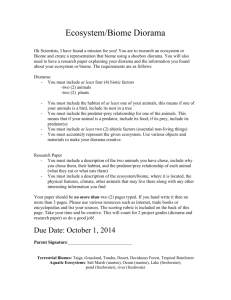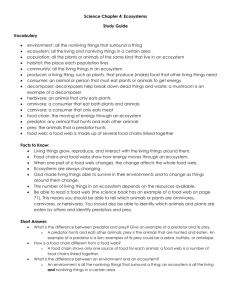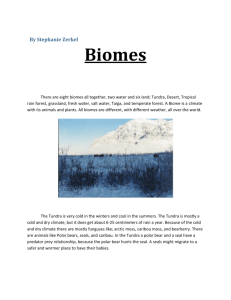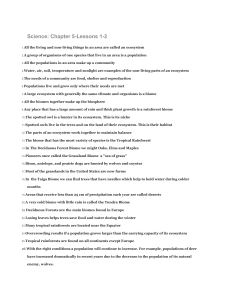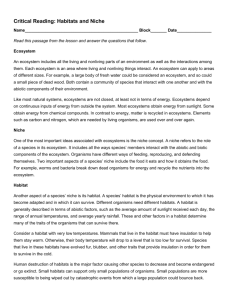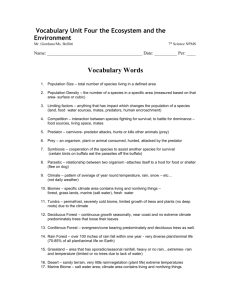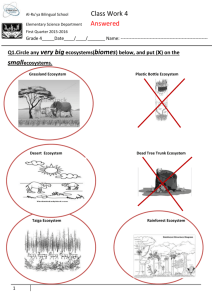Ecology Test 1 Review
advertisement
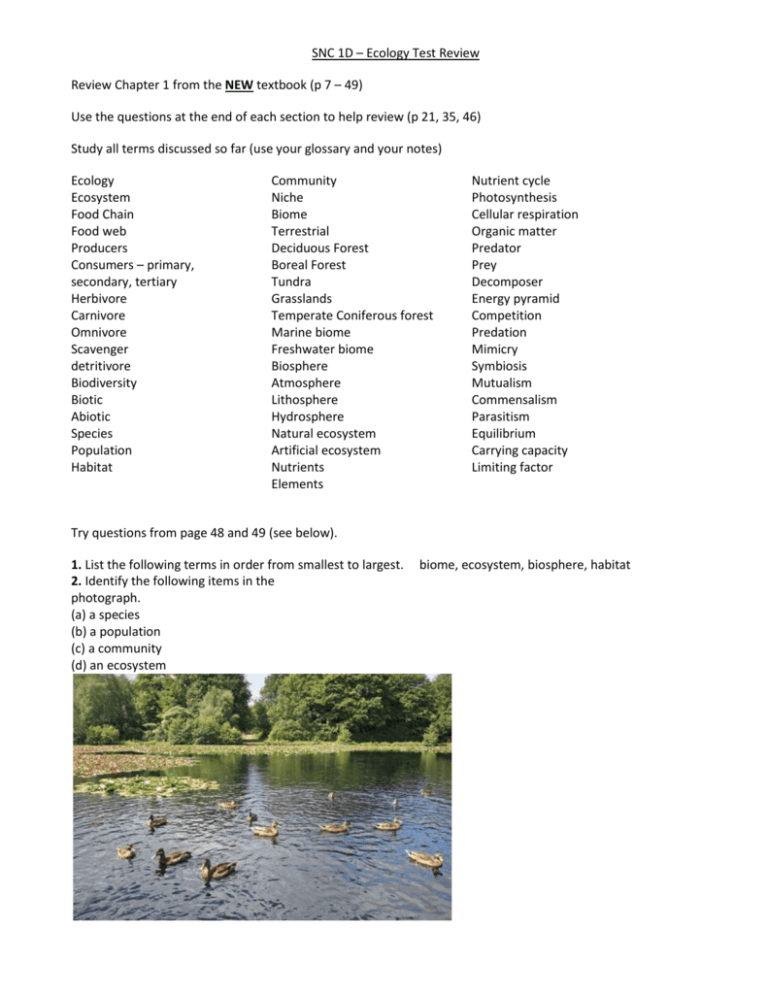
SNC 1D – Ecology Test Review Review Chapter 1 from the NEW textbook (p 7 – 49) Use the questions at the end of each section to help review (p 21, 35, 46) Study all terms discussed so far (use your glossary and your notes) Ecology Ecosystem Food Chain Food web Producers Consumers – primary, secondary, tertiary Herbivore Carnivore Omnivore Scavenger detritivore Biodiversity Biotic Abiotic Species Population Habitat Community Niche Biome Terrestrial Deciduous Forest Boreal Forest Tundra Grasslands Temperate Coniferous forest Marine biome Freshwater biome Biosphere Atmosphere Lithosphere Hydrosphere Natural ecosystem Artificial ecosystem Nutrients Elements Nutrient cycle Photosynthesis Cellular respiration Organic matter Predator Prey Decomposer Energy pyramid Competition Predation Mimicry Symbiosis Mutualism Commensalism Parasitism Equilibrium Carrying capacity Limiting factor Try questions from page 48 and 49 (see below). 1. List the following terms in order from smallest to largest. 2. Identify the following items in the photograph. (a) a species (b) a population (c) a community (d) an ecosystem biome, ecosystem, biosphere, habitat 3. (a) Describe the role photosynthesis plays in the carbon cycle. (b) Describe the role that cellular respiration plays in the carbon cycle. 4. What term best describes where all life is found? 5. Name four elements that are found in most organisms. 6. Give an example of an abiotic reservoir. 8. What is the difference between a habitat and a niche? 9. When similar species live in the same habitat, explain how competition between these species is reduced. 10. Name the five main terrestrial biomes found in Canada. 11. The open ocean and a lake are both aquatic biomes. What abiotic factor makes the two biomes different? Connect Your Understanding 12. Predict what would happen if a plant from a deciduous forest were transplanted to the tundra. Explain your answer. 13. Compare a forest to a bicycle. How are they similar, and how are they different? 14. The black-throated blue warbler migrates from the Caribbean to wetlands in northern Ontario each spring, and then it flies back again in the fall. Why would the bird make such a lengthy journey two times a year? 15. A crow’s niche is being a scavenger. Is this an accurate description of its niche? Justify your answer. 17. Photosynthesis is the most important process on Earth. Justify this statement. a 18. The paths that nutrients and energy take in ecosystems are different. (a) Draw a symbol to indicate the path energy takes. (b) Draw a symbol to indicate the path nutrients take. 19. Suppose that a herd of reindeer had been introduced to a small island that had no reindeer on it and their population had been monitored. The table below shows the population data. (b) Suggest why the population of reindeer was lower in 1940 than in 1935. Several different plausible extrapolations are possible. Suggest one or more, and be prepared to explain your predictions. 20. When a predator catches its prey, it may appear that the prey species suffers. But there are benefits to this type of interaction for the prey species as well. What are two ways in which the prey species may benefit from the predator hunting them? 21. Bacteria can reproduce so quickly that, under ideal conditions, one bacterium could produce enough bacteria to cover the entire planet in only a few weeks. Explain why this does not happen.

